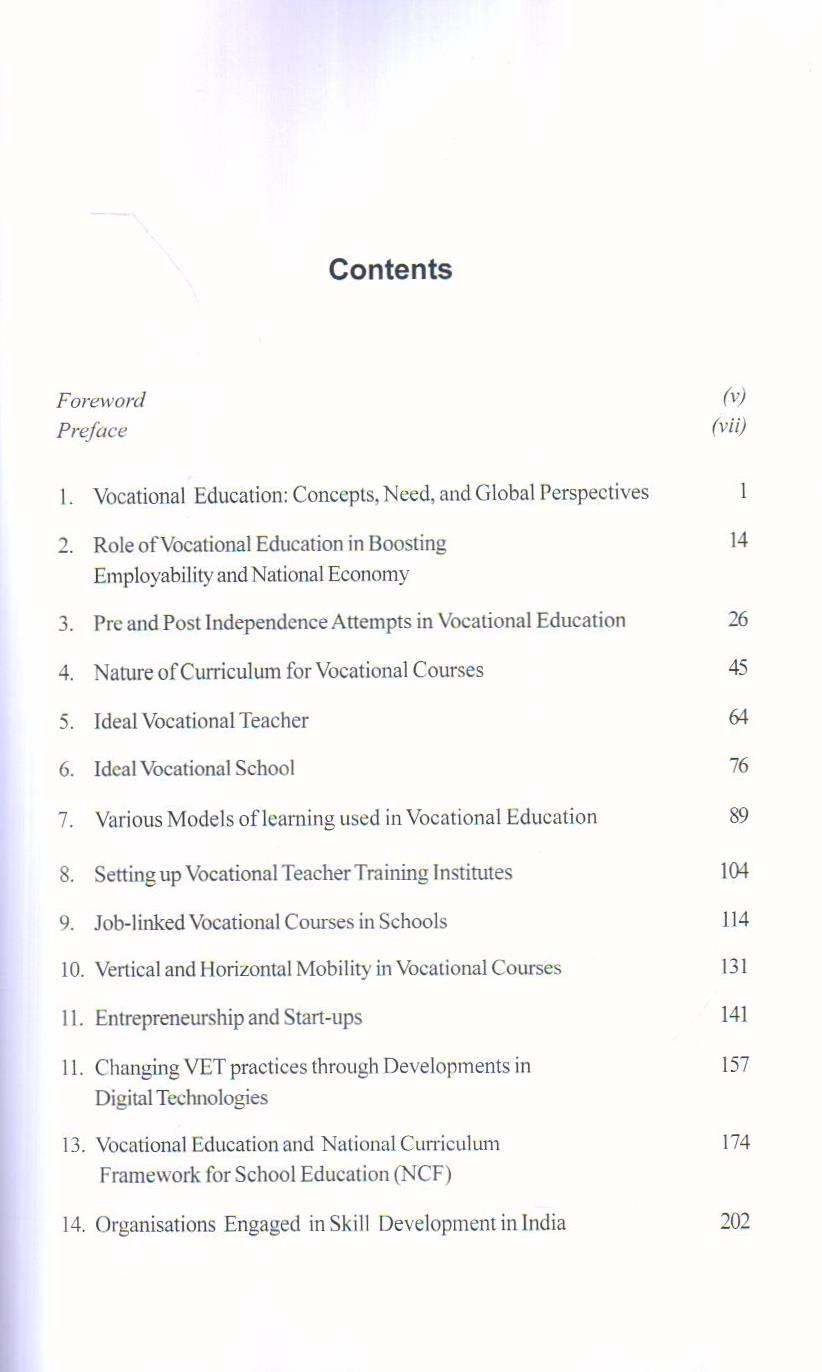Foreword
The book Vocational Education in Schools offers valuable insights into various dimensions of vocational education, both conceptual and practical. It clarifies the concept of vocational education and examines its prevalence in vocationally advanced countries. Equally important, the book addresses the unfortunate neglect of vocational education among students, highlighting the need to change the perception that vocational tracks are for those who are academically weaker.
The authors rightly emphasise the importance of diagnosing students’ aptitudes early on so they can fully embrace and excel in the vocational stream if it aligns with their interests and strengths. There is a prevalent misconception, which stems from the early National Education Policies of 1968 and 1986, that vocational education is meant for the less academically inclined. The reality, as the authors assert, is that vocational education is for students with a strong aptitude for practical skills, and both academic and vocational streams can lead to success and contribute to the nation’s prosperity.
The book makes a compelling case for the role of vocational education in addressing unemployment and boosting the national economy. When implemented correctly, vocational education offers students the opportunity for employment or self-employment, sparing them the uncertainty of what comes next after school. In line with the National Education Policy (NEP) 2020, the authors argue for both vertical and horizontal growth opportunities for vocational education graduates. The book also advocates for job-linked courses in schools, highlighting real-life success stories of vocational graduates who have advanced from entry-level positions to top roles in fields such as insurance.
The authors also call for a teacher education programme on Vocational Education for those wishing to become trained vocational teachers. They make a strong point that vocational education should be taught by educators who are properly trained in vocational pedagogy. It is crucial, as the authors mention, that vocational courses offered by schools are taught in dedicated labs and by specialised instructors. Currently, many schools assign vocational subjects to existing teachers, such as asking a physics teacher to teach vocational electricity or a commerce teacher to take marketing and salesmanship. This practice undermines the quality of vocational education. Schools should opt for vocational courses with the appropriate infrastructure and teachers who can equip students with the skills needed for employment or entrepreneurship.







Reviews
There are no reviews yet.